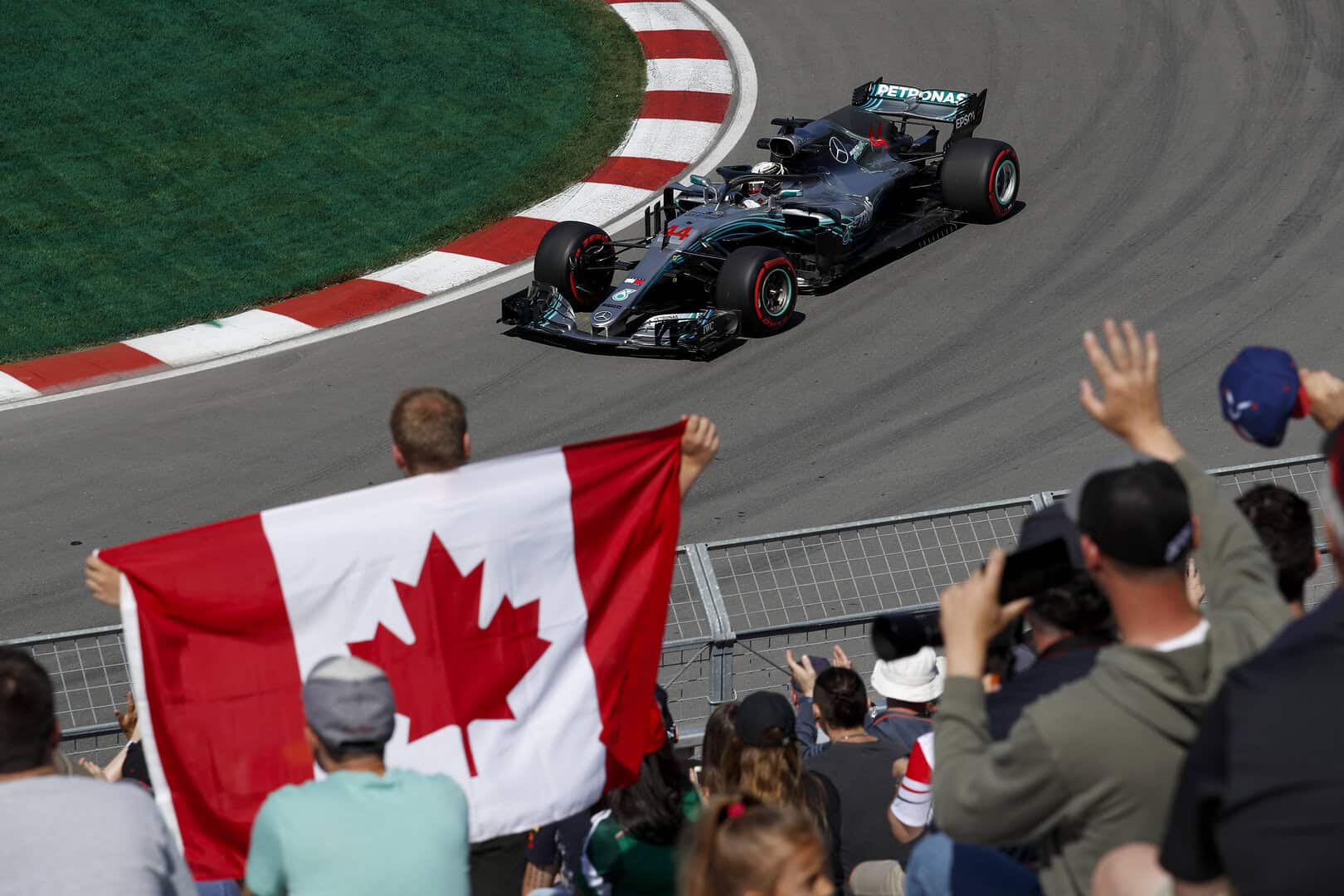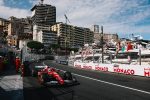A deep and sad division among motorsport decision-makers has reared its ugly head once again. It wasn’t necessary, it’s completely brainless, and only one side loses in this: the fans.
Formula 1’s decision to move the Canadian Grand Prix to Monaco’s traditional spot on Memorial Day weekend wasn’t inflammatory in and of itself. The move paves the way for the series to shore up a scheduling hole. However, having the race overlap with the NTT IndyCar Series’ Indianapolis 500, one of two preeminent motorsports events in the world, is a Zimmerman telegram escalation against Roger Penske’s series.
This amounts to F1 thumbing its nose at IndyCar and the Indianapolis 500 at best. At its worst, it may as well be a declaration of war. And, make no mistake, this has been brewing for a while.
With the influx of F1 into the U.S. market, working with IndyCar never seemed to be part of the plan. Three Grands Prix are held in the U.S. now with two additional races in North America in the form of the aforementioned Canada race and one in Mexico. There were subtle hints that F1 was going to do what it wanted to take from IndyCar’s share, even using the “Greatest Spectacle” line at the inaugural Miami Grand Prix event before Indianapolis Motor Speedway ensured its trademark was protected.
But to invade the time slot of the Indianapolis 500 with another race in the Western Hemisphere? They might as well give the winner of the Canadiana GP the “Worg-Barner” Trophy.
What a massive disservice to fans, who are once again being thrown into the quagmire of motorsports’ politics and egotism, which have long weighed on the sport. The Indy 500 was once known as the International 500 Sweepstakes, so the worldwide appeal for the race is massive. It also has multiple former F1 drivers that compete — those competitors’ fans should have an opportunity to watch them in the greatest race in the world. Multiple F1 champions have won the race, including Graham Hill, Emerson Fittipaldi and Mario Andretti, though the latter won before taking his talents to F1. Hell, the Indy 500 used to give F1 World Championship driver points back in the 1960s, so the crossover in fan bases is clearly there.
But motorsports fans are not allowed to have good things; instead, they have an F1 Grand Prix right on top of the Greatest Spectacle in Racing. It must be some sort of worldwide law or something that series leaders have to screw over their fans.
Out of all the professional competitions and sports leagues that have massive followings, motorsports is the only one that perpetuates this gross incompetence, as every series tries to compete against their fellow racing competitors instead of working with them.
Races on the same networks are scheduled against one another, like IndyCar and NASCAR were on NBC. Events that could be moved to ensure fans see one major series on Saturday and another on Sunday don’t happen. Ideas like increasing value at venues with multiple series in one major motorsport extravaganza, a la the NASCAR/IndyCar doubleheader at IMS, were shelved and tossed aside after a few years of trying. Even the Double is looked down on by NASCAR, which probably didn’t care too much that Kyle Larson chose the Indy 500 last year over the 600 after rain delayed the start. Some of that is evidenced by the delay in Larson’s waiver for playoff eligibility.
IndyCar isn’t innocent either, making multiple scheduling SNAFUs that put races over the 12 Hours of Sebring and, like this coming weekend’s 24 Hours of Le Mans, races that their drivers want to compete in. Even the Brickyard 400, which will be a major event even for IndyCar’s core audience in Indiana, runs directly opposed to the Grand Prix of Monterey at Laguna Seca in California.
It’s every race series for itself, to rule over a shrinking fan demographic and sponsor space.
Great job, everyone. A round of applause for all of you.
This has been a frustration I’ve lived with for a long time. I hate it. I watch many sports, and very rarely do I have to choose between key games to get what I want.
When the college basketball title game is on, there might be one or two NBA games on that night. This year, there were two. But the previous day and the one after, there were 11 and 10, respectively, to ensure that the title game had as little competition as possible. A basketball fan’s attention was hardly divided on that Monday.
How about the most popular sport in the U.S.? When football rolls into their weekends, fans are hardly split in two. Thursdays will generally be one NFL game, Friday maybe a college game or their local high school football if fans choose, Saturday is a day of college games and Sunday is owned by the NFL. To make things even better, the NFL then keeps a slot open for one premier matchup Sunday night, and then another on Monday.
When the football championship window opens for both, the NFL packs its Division playoff round into the weekend, leaving the following Monday for the College Football Playoff Championship Game.
Scheduling nirvana.
As a motorsports fan, that doesn’t happen, as next Memorial Day weekend will be a cluster. Instead, fans get the basketball equivalent of the college title game scheduled up against Lebron James’ Lakers vs. Stephen Curry’s Warriors, with Knicks vs. Clippers later that night. Or in football terms, the Super Bowl overlaps with the Ohio State University vs. the University of Michigan, with a marquee Sunday Night Football matchup at the end of the night.
What are we doing here? It doesn’t have to be this way, but motorsports series leaders don’t care about synergy or a belief that the tide raises all boats. When Helio Castroneves competed in the Daytona 500, that surely brought eyeballs from the IndyCar world over. Fernando Alonso or Larson doing the Indy 500 in a series that isn’t their usual playground? Motorsports heaven.
But the synergy is few and far between, as leaders strive for motorsports domination, divide and conquer so they can suck up the finite sponsorship and advertising revenue, bring the rest of the leagues and series to their knees and bow before whoever has the most money coming in.
What a crock.
Prior to the Canadian Grand Prix move, the Sunday of Memorial Day Weekend was the best day in motorsports. Three series were on television — the sun rose on F1’s Monaco Grand Prix, the midday was the Indy 500 and dusk was seen in Charlotte for NASCAR’s Coca-Cola 600. This year, that equated to 11.95 million total viewers watching motorsports across three disciplines.
For fans, especially the 300,000-plus who go to the Indy 500, many have the F1 race on at their tailgate spot. Even Indianapolis Motor Speedway put it on their big screens some years, embracing the motorsports glory. If someone was at home, they could watch as they prepared their breakfast bacon or opened their first beer to start their day-long cookout with friends and family. Then, later, the Indy 500 comes on, it’s going while the burgers are burning on the grill, and the evening ends with the Coke 600 on while folks pass out in their recliners.
That is a true American holiday.
Now it’s gone.
Racing is beating itself with these archaic, self-interested decisions.
The sport is already complex enough as it is to grab attention. There aren’t motorsports leagues in high school, no traveling youth teams run by a local recreational department that bring up kids in the sport. It’s expensive, trending towards the only access being for the rich and those with connections. The sport has to convince interested spectators why turning left all the time is entertaining and what the differences are between F1, IndyCar and NASCAR, not to mention IMSA, NHRA, MotoGP, etc.
To hook people to the sport, you need your fans to be engaged and happy. They are the ones who are going to explain the differences between stage points, lucky dogs, parc ferme, overcuts, red tires and green-white-checkered flags to interested newbies.
Then why on earth does the racing world choose to make it harder to watch more racing for fans? It makes no sense.
Oh, it actually makes plenty of sense. Money. Greed. Egos. Narcissism maybe?
Motorsports lineage is strewn with the discarded body panels and fans in multiple wars. There’s the most known, the open-wheel Split that anchored IndyCar to the bottom of the motorsports pit. That was motivated by an egotistical urge to control open-wheel racing, a misguided attempt that divided eyeballs. It was very common back then to have both those series run head-to-head on race weekends, including the dumbest decision in motorsports history when CART ran the US 500 opposite the Indy 500 (take note F1). Look what happened. Did that draw more fans? No.
NASCAR then went all scorched earth in the decade afterwards, buying up race tracks, centralizing control, and moving the sport out of its roots in the south. Greed again. The France family looked at IndyCar as a junior series and didn’t promote the races when the Indy Racing League came to their tracks. Meanwhile, slowly but surely, NASCAR climbed to the top and didn’t care about other series, instead focusing on taking on Major League Baseball, the NBA, and the NFL.
With that status, NASCAR could have leveraged its assets like racetracks and marketing to get more people into racing at large, not just stock cars. But they went a different way, falling greatly from their colossal heights with a bang.
Between those two, the most popular form of motorsports in America, there is no coordination, no working together to ensure the fans get plenty of racing. It’s the same old fight, which previously was just these two American series.
F1 has now joined the fight. It’s a three-sided war, with other entities like NHRA, IMSA and MotoGP, trying to gain a foothold in the fans’ attention.
It’s a continuation of the same, consistent, misguided problem created by selfish leaders. Motorsport is the only sport that chooses to compete against itself.
A war has been declared, but there is no winner in this. Only losers, and that’s the fans.
Tom is an IndyCar writer at Frontstretch, joining in March 2023. Besides writing the IndyCar Previews and frequent editions of Inside IndyCar, he will hop on as a fill-in guest on the Open Wheel podcast The Pit Straight. A native Hoosier, he calls Fort Wayne home. Follow Tom on Twitter @TomBlackburn42.





